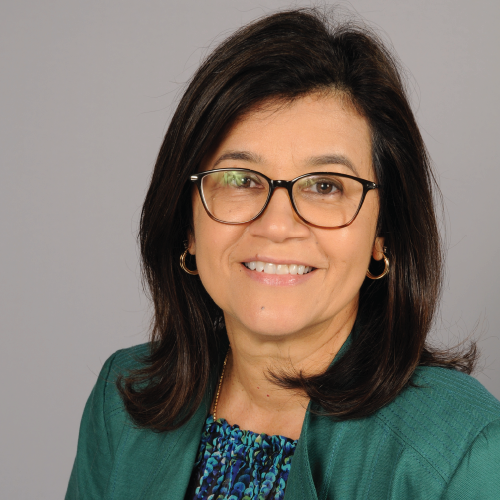Guest Post: Making the Most of Your Summer Fun(ds)— Planning Engaging Enrichment
January 18, 2024
This is a guest post from AASA 2023-24 president, Gladys Cruz.
While many of us are busy shoveling snow or making New Year's resolutions, summer is already on the minds of many families in our districts. Across the country, brochures for everything from summer camps to summer learning programs start arriving in mailboxes and inboxes as early as this month. (If you haven’t already sent out a save-the-date for your own program, let this be your reminder to do so!)
Amid many competing priorities, you may be wondering how your summer program can pique the interest of the families you are most eager to engage. What can your district offer that inspires students to voluntarily come to school in the summer?
One way you can entice students to come to school in the summer is by adding an element of fun and discovery by offering engaging enrichment programming in an overall camp-like culture alongside your academic component.
Engaging enrichment programming is more than just recreation; it is a wonderful opportunity to equip young people with new experiences and skills they might not be getting elsewhere. Especially for students who struggle academically, high-quality enrichment activities offered as part of summer programs provide a chance to be great at something new, or to be great at something in school for the very first time. A camp-like culture not only helps to differentiate the summer from the school year, but it also offers new opportunities for belonging, leadership, relationship-building, and fun for students and teachers alike.
Consider the following tips to plan a program that engages and excites students and families:
1. Assess student and family interests
If time permits, gather input from a selection of students and families to understand the enrichment options and camp features that are most appealing to them. Instead of asking open-ended questions, identify a short list of ideas that offer students novel learning opportunities or that prepare them with a useful skill for the future. For example, instead of free play or recess, youth may benefit from learning a sport they can then play in school during the year. Other unique offerings might include activities that may be cost-prohibitive or inaccessible for families on their own, such as archery, horseback riding, media arts, coding, or cooking.
2. Gather information on your enrichment assets
As you are gathering input, you can also assess the assets and resources your district may be able to dedicate to high-quality enrichment. These may include:
- Amenities/facilities: Do you have a temperate climate and great outdoor amenities? Is there a pool at the high school or a nearby community center? What fields, lab and kitchen spaces, and other facilities might be available in the summer?
- Staff expertise: Consider if your fine arts and science teachers are available to create engaging arts and STEM programming. CTE and magnet-program teachers can also be helpful resources and offer enrichment programming that previews future career opportunities for students.
- Community organizations: Which community partners are already invested in your schools and families? Determine if youth development, environmental, or arts and cultural organizations might be able to partner with your district over the summer to offer enrichment programming.
3. Determine where your enrichment curriculum will come from
Once you have determined the topics you want to offer and the resources you can apply to enrichment, decide where enrichment units, lessons, and staffing will come from. Common choices include tapping in-house subject-matter experts; partnering with a community-based organization; or buying enrichment curriculum off the shelf. Many districts choose a mix of options to provide enrichment across multiple grade levels and topics.
If you are partnering externally, the Summer Learning Toolkit offers a variety of sample tools for soliciting and rating proposals as well as a sample partner Memorandum of Understanding (MOU) to delineate roles and responsibilities between the district and its partners. These resources can be helpful for both identifying brand new community partners or for renewing them each year.
Sample - Pittsburgh Summer Enrichment Selection: Resources to solicit and review enrichment provider proposals
- Guidance (.pdf)
- Sample RFP (.pdf)
- Sample RFP Presentation (.pdf)
- Sample Review Rubric (.pdf)
- Sample Review Rubric For Returning Partners (.pdf)
- Sample Score Sheet (.pdf)
- Sample Score Sheet For Returning Partners (.pdf)
- Sample Provider Meeting (.pdf)
- Download All (.zip)
Sample - Boston Summer Enrichment MOU: Describes the partner’s role in co-managing the design, administration, and delivery of the program
4. Form a “Culture Committee” to generate ideas and enthusiasm
There are many ways to make connections across the academic and enrichment parts of the summer program day, and one of them is through a positive camp culture led by both staff and students. Invite student and staff representatives to join a Culture Committee that will help to develop the rituals, traditions, language, themes, decor, and incentives that unify the summer program. Their first task: helping to develop a camp name and logo to be used in marketing and recruitment materials.
* * *
Remember, investing the time in planning the enrichment and culture aspects of your summer program is just as important as carefully planning the academics. Together, these elements will help you build a program where students learn, grow, and are eager to return next summer!
This blog is part of a Summer Program Planning series that draws from evidence-based practices culled from RAND research commissioned by The Wallace Foundation. Each suggestion is accompanied by concrete resources from the online Summer Learning Toolkit to provide just-in-time support throughout the school year for your district’s summer learning team. (Check out the May, June, July, August, October, November, and December blog posts for more summer advice.)
For more, share Eight Key Summer Learning Practices for Elementary School Districts with your summer leadership team.



